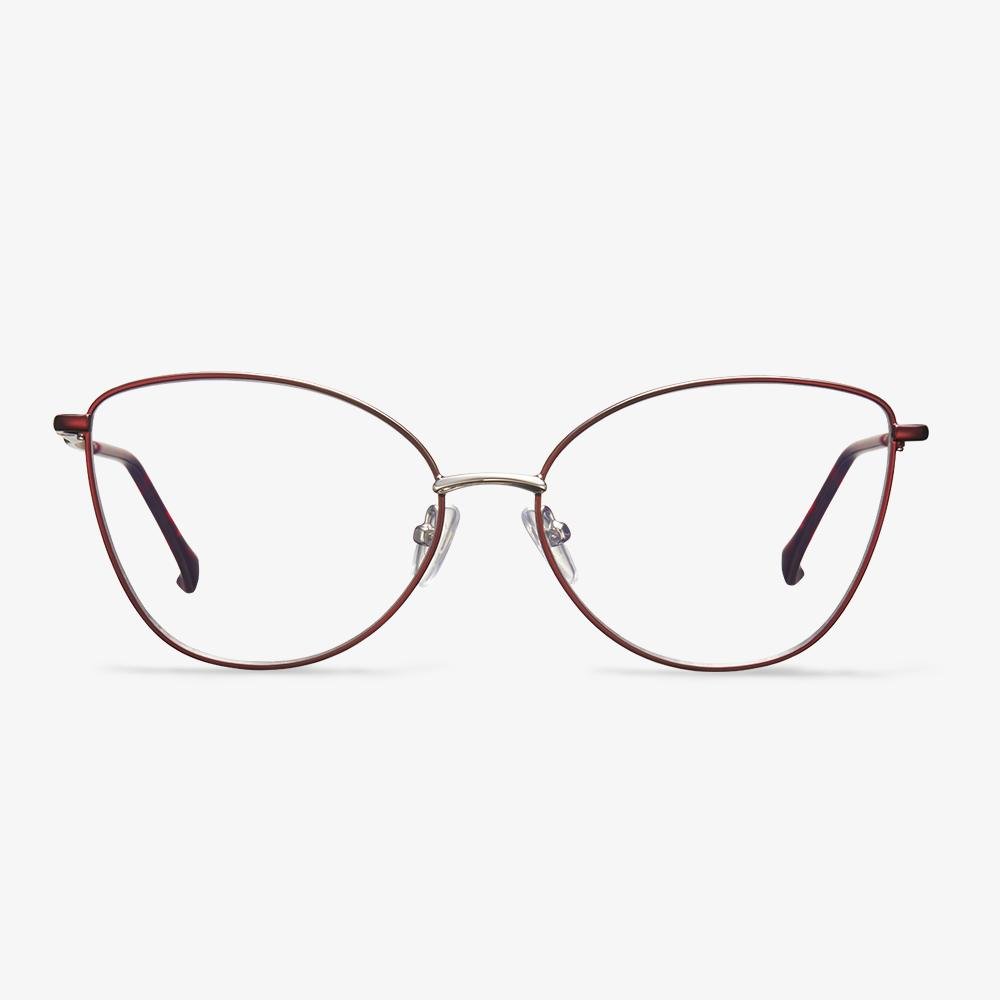Is it true that green film prevents blue light?
Some lenses filter out harmful blue light by reflective multiplayer coating. The lens has a bright blue-violet coating. Green film anti-blue lens relies on the lens material itself to absorb blue light. Therefore, it is impossible to know if the lens can really block the blue light only by looking at the film layer. Instead, it is necessary to use the test equipment of blue light blocking rate or ask the manufacturer to provide relevant experimental data. There is no problem wearing an anti-blue lens unless the user has a high demand for color authenticity, like painters, graphic designers, etc. Because when using anti-blue glasses to see white blue objects, there will be a certain color deviation. It is up to the above workers to make their own decisions.
GlassesUSA has a wide variety of glasses.
GlassesUSA has a large selection of frames to choose from. Their frames are classified by gender, designer, color, shape, and trend. In addition to sunglasses and sports glasses, there is an area for children's glasses. GlassesUSA has cheap options and expensive frames. To mark the launch of 3D-printed glasses, GlassesUSA is giving consumers the opportunity to design their own frames for an opportunity to win a $300 GlassesUSA gift card.
How to maintain a hard-coated lens?
The hard-coated resin lenses can be identified by the sound of the tabletop tapping and the color brightness of the lenses. The lenses, which sound clear and have bright edges, are hardened. In daily use, avoid overheating environment. Avoid contacting with alkaline liquid, so as not to cause damage to the lens. And this damage is usually not formed in an instant.
Long-term use, sun exposure, and so on may make the coating slowly fall off. If the production of hard film technology is worse, the film is easier to fall off. When cleaning and adding a hard-coated lens, clean the particles on the front and rear surfaces of the lens with clean water first, and then blot dry with a clean soft cloth. Do not wipe the surface when the lens is dry.
Orthokeratology
Orthokeratology is a type of surgery that corrects the eyesight of the eye. It improves daytime vision through a rigid, highly breathable contact lens. Orthokeratology is the use of the principle of reverse geometry. Change the curvature of the cornea with orthokeratology lenses, to achieve the effect of non-surgical vision correction and prevention of myopia.
Although it can effectively improve vision, it still cannot solve the sequelae of high myopia, like macular degeneration and retinal detachment. Orthokeratology lenses were initially used by patients who wanted to temporarily go without glasses, so the websites of orthokeratology lenses in the United States continue to sell them primarily to young people and people who love sports.
How To Choose Better Night Driving Glasses?
Choose and buy glasses to use a special night with anti - strong night driving lens. The demand is to block 80-90% of the strong lights and harmful lights, and at the same time to make the road more clearly. Choose glasses with thicker lenses, they are more durable and protect the eyes of drivers against irritation and accidental breakage. As common sunglasses and color-changing glasses are only suitable for daytime wear, wearing them at night will seriously affect the driver's vision.
Common light yellow night driving glasses can only block a small amount of light, and is not very suitable for night driving glasses standards. Therefore, in the choice of lenses of night driving glasses, we must do the selection and demonstration of the national authority of the formal institutions to test products, to achieve the desired effect in actual use. Don't buy products that are not up to standards from vendors. Such products not only do not block the lights but may affect the driver to see the road ahead, affecting the safety of the train operation.
How to Test Blue Light Glasses (Amber and Red Lenses)
This section will show you how to test blue light glasses with amber or red lenses.
1. The Black and Blue Squares Test
1. Prepare black and blue paper.
2. Wear your blue light glasses after sunset and check whether both paper appear black.
3. If they do not appear black, your blue light glasses can’t block all blue light.
2. RGB Color Chart Test
1. Prepare an RGB color chart as follows.
2. Wear your blue light block glasses and look at the chart.
3. After wearing blue light blocking glasses, if the B section becomes black and the G section becomes darken, it shows that your blue light glasses block blue light and some filter some green light.
4. The less bright the green circle with your blue light glasses, the better they are.

Besides the above ways, you can ask the professional optician to perform a professional blue light glasses test, which would be more reliable. After that, you can know whether your glasses work effectively to block blue light.
What’s more, if you want to purchase a pair of effective blue light blocking glasses, you can try Koalaeye Optical. It is cheap and provides free shipping services.
How to Pop Lenses Out of Glasses with Plastic Frames?
In this section, we will show you how to take glasses out of plastic frames. It would be much easier to remove lenses from plastic frames because lenses are not fitted as tightly in them as in metal frames.
Now, here is the tutorial.
- Many plastic lenses will come out easily as you push through your thumb from the inner side and fix your fingers on the other side.
- If they do not come off, you can choose to heat the plastic a little bit so that it expands and allows the lenses to come out.
- To heat the plastic frames, you can immerse the glasses in a bowl of hot water. The water should be hot, not warm but of course only as much as you can handle amicably.
- Be careful to not drop your lenses in the bowl. Dry them with a no microfiber cloth and then you can remove them. You can’t use any towels because those can damage any blue light or anti reflective covering.
After all steps are finished, you can remove lenses from glasses.











































